Mark Sisson's Blog, page 211
August 27, 2016
Greek Salad with PRIMAL KITCHEN™ Greek Vinaigrette Chicken Skewers
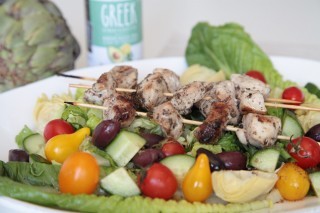 Grilled chicken tossed with crisp lettuce, cucumber, and red onion plus tangy cherry tomatoes, artichoke hearts and olives makes an amazing Greek salad when everything is doused in PRIMAL KITCHEN™ Greek Vinaigrette.
Grilled chicken tossed with crisp lettuce, cucumber, and red onion plus tangy cherry tomatoes, artichoke hearts and olives makes an amazing Greek salad when everything is doused in PRIMAL KITCHEN™ Greek Vinaigrette.
It’s not only the zesty, herbal flavor that’s amazing. PRIMAL KITCHEN™ Greek Vinaigrette is also amazing because it’s packed with healthy and nutrient-boosting avocado oil and high-ORAC oil of oregano.
It’s shocking how many jars of bottled salad dressings are filled with ingredients that can cause weight gain, spiked blood sugar and high triglycerides. But not PRIMAL KITCHEN™ salad dressings. The Greek Vinaigrette is super-healthy and has a savory blend of Greek flavors (vinegar, oregano, coriander, marjoram, lemon) that can be used to both dress salad and marinate meat and seafood.
In this recipe, chicken breast is marinated in PRIMAL KITCHEN™ Greek Vinaigrette, then skewered and grilled. The chicken is tossed with a Greek salad that’s lightly dressed with, you guessed it, PRIMAL KITCHEN™ Greek Vinaigrette. All the flavor and seasonings you need for this meal are poured out of one Primal and Paleo approved bottle.
Time in the Kitchen: 45 minutes
Servings: 4
Ingredients
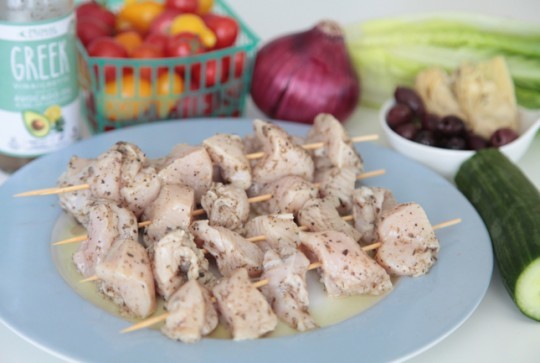
1.5 pounds boneless, skinless chicken breast, cut into 1 1/2-inch pieces (43 g)
½ cup Primal Kitchen Greek Vinaigrette, http://primalkitchen.com/products/gre... more to dress salad (120 ml)
2 hearts of romaine lettuce, chopped
1 14-ounce can artichoke hearts packed in water, halved or quartered (400 g)
1 pint/13 ounces cherry tomatoes (400 g)
1 small English cucumber, chopped
1 cup pitted kalamata olives (130 g)
½ red onion, thinly sliced
Instructions
Toss the raw chicken with the Primal Kitchen Greek Vinaigrette. Let marinate 30 minutes, or up to 4 hours.
While the chicken is marinating, assemble the rest of the salad. In a large bowl or on a platter, layer the romaine lettuce, artichoke hearts, cherry tomatoes, cucumber, kalamata olives and red onion. Set aside in the refrigerator.
Thread the marinated chicken onto skewers. Heat the grill to medium-high and oil grate. Grill, turning occasionally, until cooked through, 10 – 14 minutes.
Toss the salad with desired amount of PRIMAL KITCHEN™ Greek Vinaigrette. Slide the chicken off the skewers and toss with the salad. (The chicken can be served warm or cold.)
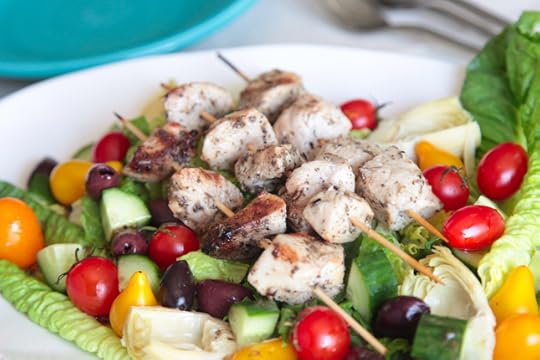




August 26, 2016
How I Recovered from Hypothyroidism and Became My Own Best Advocate
It’s Friday, everyone! And that means another Primal Blueprint Real Life Story from a Mark’s Daily Apple reader. This week’s featured success story was penned by Elle Russ, host of the Primal Blueprint Podcast and author of the upcoming Primal Blueprint Publishing title, The Paleo Thyroid Solution.
If you have your own success story and would like to share it with me and the Mark’s Daily Apple community please contact me here. I’ll continue to publish these each Friday as long as they keep coming in. Thank you for reading!

The first indication that something was wrong with me was in 2003, at the age of thirty, when I started my period two weeks early. Since I had experienced normal gynecological health all my life until this point, I didn’t consider it alarming, and I figured it was a fluke. I finally went to the doctor when I started bleeding again just two weeks later, and I was having worse than usual menstrual cramps. I went to my doctor and his immediate response to my symptoms was to put me on the birth control pill in order to control the bleeding (which is a classic solution, in my experience, from uninformed doctors).
My entire journey of suffering from hypothyroidism could have been avoided at this point, had my doctor asked the question, “What is causing this healthy, fit thirty-year-old with perfect gynecological history to start bleeding abnormally?” Unfortunately, my doctor did not ask this question (and neither did I). Instead, he continued to prescribe a variety of birth control pills, each one stronger than the last, because they all kept failing to control the abnormal, excessive bleeding. But I trusted my doctor’s advice—a mistake. Throughout the many months I tried the various birth control pills he prescribed, I rapidly gained weight and constantly felt as though I was in a bloated, menstrual state. This made no sense because I exercised regularly, and I had what most people would consider a fit physique. I am 5’2”, I was 110–115 lbs, 16% to 17% body fat, and before hypothyroidism hit me, I exemplified the image of health and fitness.
Someone suggested to me that I might have a thyroid problem, so I went back to my doctor to have him test my thyroid–another big mistake. Here was a doctor who didn’t even think to inquire about the root cause of my bleeding, and here I was trusting him to take appropriate blood tests. Yikes! In retrospect, that should have been a major red flag. My doctor tested my thyroid incorrectly by only testing my TSH. He said the TSH was within range, I did not have a thyroid problem, and I just needed to exercise more and eat less, which I thought was impossible because I had been working out two hours a day and eating 1,200 calories or less; yet, I was continuing to gain weight. He looked me in the eye and told me, “Well, it’s not your thyroid.” Had this doctor been knowledgeable enough to test my Free T3 and Free T4 levels at the time, he would have concluded that it was in fact my thyroid—I was seriously hypothyroid—and I might have been spared the horrendous experience of full-blown hypothyroidism.
It took me two years from this point to get diagnosed properly.
My symptoms progressively worsened. I was freezing all the time, even in hot weather; my temperature was 96°F versus the normal 98.6°F. I was exhausted and very depressed. I started to get acne, even though I had flawless skin my entire life. I was unknowingly very anemic with restless legs; I was bloated, heavy, and miserable in every way with constant menstrual bleeding and cramping. Life was horrific, and I barely left my apartment. I cried multiple times a day; I could hardly stand being in my own skin. I had zero control over my body and symptoms. I kept going to doctors who continued to tell me that there was nothing wrong with my thyroid.
One of the worst moments during this time was on a hike with a friend, I started to experience such severe abdominal cramps that I thought I had to take an emergency bowel movement. I walked into the woods, took down my pants, assumed the squat position, and huge blood clots fell out of my vagina onto the ground. I write this with tears in my eyes, recalling how frightened and horrified I was about my future. It was one of the scariest days of my life.
After the incident, I saw a gynecologist who misdiagnosed me with PCOS. Did I have PCOS? No and sort of. My state of hypothyroidism threw off all of my sex hormones so drastically that my pelvic ultrasound looked like the classic profile of someone with PCOS (there were sixteen or so cysts in a ring around one of my ovaries). This scenario is a perfect example of why anybody with a gynecological problem or low levels of sex hormones needs to get their thyroid tested accurately. Because the thyroid is the master gland affecting every system in our body, including our hormone levels, a state of hypothyroidism can lead to something else that will become a disease the person wouldn’t have gotten otherwise. My hypothyroid state eventually led to the formation of a polyp on the lining of my uterus and also a uterine fibroid. Because the polyp was on the lining of my uterus, it kept poking the lining and making it impossible to stay intact, which caused more bleeding and constant vaginal leakage (not cool!)—ultimately leading to severe anemia. And my depression only got worse.
I went to so many doctors and spent thousands of dollars on specialized MDs who didn’t take insurance—some were famous authors and hormone doctors to Hollywood celebrities. At some point along the way, you would think a doctor would have questioned my iron levels based on the amount of bleeding I was experiencing from my gynecological issues, but no one did. Finally, there was one doctor who tested my Free T3 and Free T4. It cost me $600 for that office visit (not including labs) to have a doctor finally test my thyroid correctly. I was relieved to know, at last, that a thyroid problem was causing all of my health and weight issues.
Below are the thyroid labs that took me two years, thousands of dollars, and an insane number of doctor’s visits to have a physician finally declare, “You are very hypothyroid.”
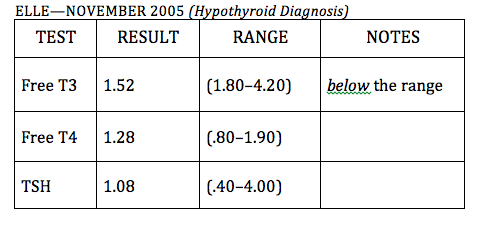
As the above values show, if an endocrinologist had tested just my Free T4 and TSH (which many endocrinologists do), they might have concluded, “Your thyroid looks fine.” These labs show how critical Free T3 testing is. This horrifically low level of Free T3 directly corresponded with every symptom I was suffering from. I retested six weeks later, to see if things were still the same, before starting thyroid hormone replacement.
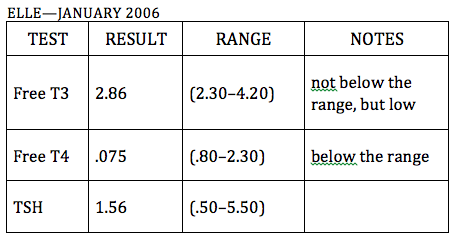
After this two-year journey, I was not only broke but also disheartened by so many doctors hurting, not helping me. So I began to search the internet 24/7 to find answers. Life had ground to a halt, and my days were filled with physical misery, existing in a state of disease that I could not control. The only advantage I had in my quest was that I worked from home and was able to rest when I needed to. I had gained more than 40 lbs, and that was with exercising daily. (In retrospect, exercise was something I should not have been doing.) Thankfully, my internet searching led me to learn about ferritin and how essential it is. I got tested and my ferritin was 10 in a range of 10–150, which meant I was severely anemic and had restless legs. I learned that if I didn’t improve my iron levels, no amount of NDT (natural desiccated thyroid) was going to help me, and I would face difficulties raising my NDT dosages, which would halt my progress.
At this point in my journey, I could not afford any more doctor’s visits, but based on my experience with doctors leading me in the wrong direction, testing me incorrectly, and misdiagnosing me, I also did not trust them to solve my hypothyroidism. So, I took my health into my own hands and started down the path of treating my own hypothyroidism with NDT—without the help or the assistance of doctors. I relied solely upon my own research and intuition, combined with the advice and wisdom of fellow patients from patient-to-patient online chat groups.
In January 2006, just six weeks after seeing my low levels of T3 and ferritin, I started taking iron. I simultaneously started taking NDT. I started to feel improvements a couple of weeks later: my restless legs started to subside, my heart palpitations began to dissipate, I had more energy, and my brain function started to kick back in. After a couple of months on NDT and iron, I was feeling better and better as every day passed. After a full year on NDT, my hypothyroid symptoms vanished and life returned to normal. I also had surgery to remove the polyp from my uterus lining, and soon after the surgery all of my gynecological issues were completely resolved. I was feeling normal again! I spent the next six to seven years on NDT feeling wonderful (although I still felt obsessed with food and found it a struggle to maintain my weight loss, because I had not yet discovered paleo/primal living). During those years on NDT, whenever I cried, it was out of gratitude for finally feeling like a normal human being again! Yeah for NDT!
Until 2011
In 2011 I began to feel the onset of hypothyroid symptoms: Inability to keep off weight, rapidly gaining fat around my stomach area and waist, dry cracked skin, inability to focus, brain fog, and depression. You might assume that because I previously experienced the perils of hypothyroidism that I would recognize hypothyroid symptoms right away, but I didn’t even consider it. I had been living well on NDT for many years until this point, so it seemed impossible that my symptoms could be related to thyroid.
My symptoms got worse, really fast. My hair was falling out and felt rubbery to the touch. I started to get very constipated and bloated. I was exhausted no matter what I did or how much I slept. I was overwhelmed by small tasks, and became extremely sensitive to light, sound, and smells. My face was puffy every morning. My legs were heavy and bloated. I can’t even recall how many times I sobbed in the shower; I was washing a bloated, fat body that was foreign to me. I would even cry on the toilet…I had gained so much weight that I struggled to reach back to wipe myself (a horrible experience to say the least). The weight gain and bloat seemed even worse than the first bout of hypothyroidism. Depression came back with a vengeance.
I went to a doctor, who I had found after getting myself optimized on NDT. Even though I had successfully treated myself for years without the aid of doctors, during my six to seven years on NDT, I kept searching for a doctor to legitimize what I had been doing without one. About three years in to taking NDT, I found what I was looking for. Not only was this doctor impressed with my story of self-treatment, but also I was able to educate her about the importance of ferritin (which she was unaware of), and she began implementing ferritin tests with her other thyroid patients. I thought I had scored the coolest doctor on planet Earth! A doctor who listened, wanted to help me, wanted to learn, and was confirming my own strategies? Jackpot! I finally felt “legit” about my thyroid treatment and health. As you might imagine, I referred a lot of people to this doctor. I trusted her, because when I first met her, she was open and willing to admit that she didn’t know everything about thyroid health. She also seemed to understand NDT dosing and was not worried about my suppressed TSH.
Well, after experiencing the second onslaught of severe hypothyroid symptoms, I went to see that doctor.
I was a bloated, fat mess sitting across from her as she scanned her clipboard, “Your blood tests, your thyroid tests…they all look great. I don’t know what to tell you about the weight gain and brain fog.” And then she proceeded to give me exercise and nutritional advice that fell on deaf ears (I was already exercising and restricting calories). I evaluated my blood results too. From what I could see, my labs looked normal, but I noticed that the T4 was higher than usual. At the time, I didn’t know this was a red flag. I left her office confused about what was causing my symptoms. A myriad of hypothyroid symptoms came crashing down on me after that; it was so severe that I didn’t feel as if I was on thyroid hormones at all! I felt just as terrible as I did before I was diagnosed many years prior. Except this time, I experienced no abnormal menstrual bleeding. Like my doctor, I too eliminated the possibility of my symptoms being related to thyroid, but I was determined to find out what was wrong with me. The fear of possibly getting another gynecological problem drove me to research my situation 24/7 again, and I eventually suspected that I might have a Reverse T3 problem.
I went back to my doctor and asked her to test Reverse T3 along with Free T3, TSH, and Free T4. She didn’t understand Reverse T3 but she ordered the tests for me anyway. The blood results proved my suspicion, I was experiencing a major Reverse T3 problem. I went back to see my doctor with a folder packed with research on the subject and plans for how to fix it. I explained to her how I had reached the diagnosis and told her that I wanted to take T3-only to fix my Reverse T3 problem. She looked at me, very annoyed, shook her head and said, “Oh Elle, this is just too complicated.”
I felt so betrayed and angry in that moment. I started sobbing. I stood up and said, “Let me show you something.” I stripped down to my underwear and stood in front of her. I had gained so much weight that my bra barely covered my nipples—it resembled a very skimpy bikini top that a Playboy bunny would wear to a pool party.
“Look at me. I’m huge! I keep gaining weight, I can’t think, I’m depressed, I’m exhausted, and I have all the other classic signs of hypothyroidism, dry cracked skin, skin thickening. I am seriously hypothyroid right now! This is too complicated? But medical school wasn’t complicated? Organic chemistry problems on the MCAT were not too complicated, but this is too complicated!? Please help me! I need help!” She looked at me as if I were crazy. “I’m sorry I can’t help you with this, but I will try to find someone who can, and I’ll have my office call you with a referral.” (I never got a referral even after calling the office three more times.)
Below is my blood work from when I was on NDT but had developed an RT3 problem and had become severely hypothyroid a second time, because the T4 in my NDT was being converted into the biologically inactive Reverse T3. As you can see, my Free T3 is high and could potentially look normal for someone on NDT (except that I had hypothyroid symptoms). My high Free T4 was a red-flag indicator that I might be experiencing a major Reverse T3 problem. The ratio between my Free T3 and Reverse T3 confirmed that I did indeed have an RT3 problem.
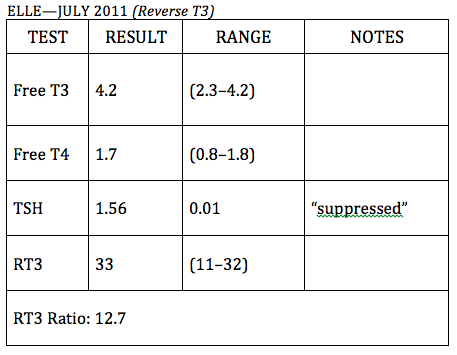
Free T3/Reverse T3 Ratio: 20 or higher is considered healthy.
I walked out of the doctor’s office and sat in my car, sobbing. Here I was again, in the same position as I had been seven years prior, when no one in the medical community would help me. I felt so alone in that moment, because I had a gut feeling that I was going to be on my own again for the second time with hypothyroidism. My gut feeling was confirmed when, after pleading with thyroid specialists and doctors in Los Angeles to help me, not one of them would. The vast majority of the medical community was, and still is, clueless about diagnosing and treating Reverse T3, especially with T3-only.
The doctors I spoke with were very afraid of T3 for no apparent valid reasons. Not one MD I spoke with prescribed T3 without T4 to their patients, and most of them warned me that T3 was very dangerous and that I could give myself a heart attack. I didn’t believe them. I started doing a ton of research on T3 and Reverse T3 and discovered an online group dedicated to the subject, which I joined. I received amazing emotional support and invaluable advice. After learning about the myths surrounding fears that doctors have of using T3-only, I became confident that T3 was not going to kill me. In fact, I became quite confident that T3 would accomplish the opposite—T3 would save my life.
It did. And it still does.
Because I had the luxury of working from home, I was able to closely monitor my blood pressure, pulse, temperatures, and symptoms without worrying about onlookers. I took detailed notes on everything I did and everything I felt. It took about ten weeks to start feeling normal again, but I still struggled to lose the excess weight I had gained.
How a Paleo/Primal Lifestyle Was the Final Key to Healing
After sixteen months on T3-only, I finally adopted a paleo/primal lifestyle. I knew I had discovered something unique when not only the weight started falling off me, but I was able to reduce my T3 dose significantly. Most importantly, food addictions, food obsessions, and unhealthy cravings disappeared! I couldn’t believe that. From teenage years on, I always felt a struggle with food and diet. Even though I had once achieved a body I was thrilled with before hypothyroidism entered my life, I achieved it through conventional low-fat “eat three to five meals a day” diet wisdom, and I always felt as though I had to sacrifice, suffer. And frankly, I thought it was the only way to achieve ideal body composition because every diet book I read said the same thing. When I had been on NDT, I had managed to lose most of the hypothyroid weight, but it always felt like a struggle to keep it off. I was always thinking about what I was going to have for my next meal, I was hungry every two to four hours, and I always felt I had to use extreme willpower with portion control and everything else regarding eating. I honestly felt as if I was cursed because I saw other friends and how they ate; it didn’t seem as though they had the same issues with feeling obsessed with food. I could not understand why I did.
After going paleo/primal and getting fat adapted, my former food addictions and obsessions all made perfect sense, and most importantly, they disappeared! When I strictly adhere to a paleo/primal lifestyle, I have zero issues with food obsessions and sugar cravings. Although if I veer off course, they come back. In fact, I rarely think about food until I am hungry, whereas I used to think about food all the time! It was a relief to know that there wasn’t something inherently wrong with me after all those years of struggle. I was simply eating against my genetic programming, against my DNA map. The evidence is overwhelming in favor of a paleo/primal lifestyle for keeping adrenal glands in check, managing blood glucose, and eradicating food addictions/obsessions. And adopting the lifestyle is what has kept me healthy, vibrant, and fit even after years of battling hypothyroidism!
My Journey in Pictures
Before I got hypothyroidism (2000–2003) I was very fit, lean, feeling great in my body and averaging between 110 and 115 lbs. I was a size 2–4.
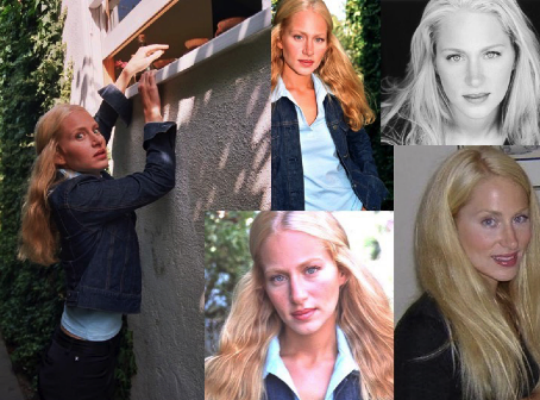
The onset of hypothyroid symptoms began in the fall of 2003. The symptomatic weight gain is especially apparent in my face in these photos from a wedding I attended in the fall of 2004. I was miserable behind that smile. I had gained more than 40 lbs, even though I was exercising one to two hours a day.
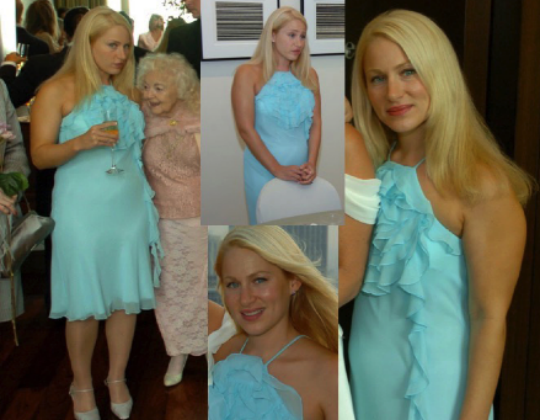
In January 2006, I started NDT, and it took about a year for me to feel good in my body again and simultaneously correct low iron and adrenal fatigue. These photos were taken between 2007 and 2010, when I was on 3–3.5 grains of NDT, which I multi-dosed twice a day. I was convinced that I had solved my hypothyroidism forever.
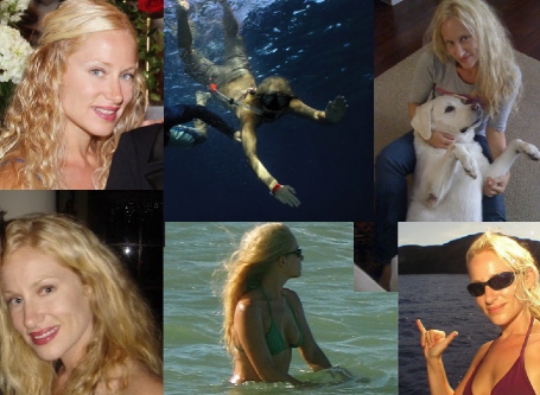
I didn’t know my body was brewing an RT3 problem at the time, but this (photo on the right) was two months before the onset of full-blown Reverse T3 hypothyroidism. I was starting to get bigger and more bloated and was having trouble keeping weight off.
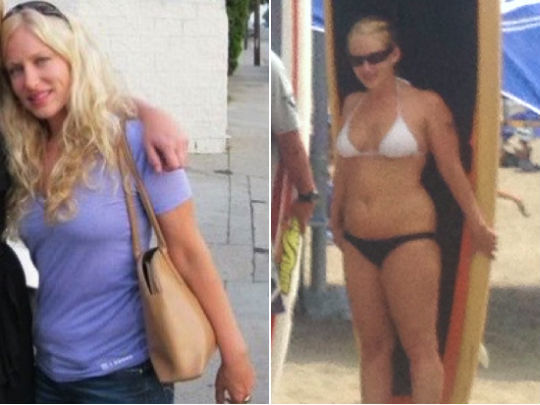
However, the photo on the left, taken July 26, 2012, is after four months on T3-only. It took me three of those four months to fix my Reverse T3 problem and feel better. In this photo, although I felt considerably better in every way, my weight had still not budged much (only 10 lbs down). I was doing hot yoga classes five to six days a week (which I later realized was chronic cardio and part of the problem).
 The picture below (taken in June 2015), is after three years on T3-only and one and a half years after going paleo. As you can see, it was the combination of correctly treating the reverse T3 problem AND adopting a paleo/primal lifestyle that was the real solution to sustaining optimal health.
The picture below (taken in June 2015), is after three years on T3-only and one and a half years after going paleo. As you can see, it was the combination of correctly treating the reverse T3 problem AND adopting a paleo/primal lifestyle that was the real solution to sustaining optimal health.
Although I wish I hadn’t gone through any of this, I am glad I did. I not only have a profound appreciation for feeling normal, but it is my hope that all of my mistakes and misdiagnoses along the way will help other people who are worried they might never be well again.
So if you or anyone you know is suffering (or suspects they are suffering) from thyroid-related dysfunction, purchase a copy of my book, The Paleo Thyroid Solution, for a comprehensive guide on how to take charge of your health and heal from the inside out.
Elle
Like This Blog Post? Subscribe to the Mark's Daily Apple Newsletter and Get 10 eBooks and More Delivered to Your Inbox for FREE



August 25, 2016
How Caring Less Can Help You Accomplish More
 It’s been a concept I’ve been focusing on the last few years now—applying it to my life and contemplating how it fits with (and indeed underscores) the Primal Blueprint philosophy. The fact is, I’ve never wanted to see the PB as only a means to a smaller waistline and more defined musculature. I’ve ultimately hoped for it to evolve into a guide for what I’d consider the good life. And what do we think of when we think of the “good life”? Beyond any personal material whims, the crux of most people’s answers usually hover around ideas of ease, balance and happiness. Compare that with the images we’re often shown to illustrate accomplishment (health or otherwise): razor focus, dogged effort, staunch insistence. Anyone else see the disconnect here? Do we really need to throw ourselves into exacting standards and maniacal will to achieve anything of substance? I think not. So let me say a few words on behalf of caring less.
It’s been a concept I’ve been focusing on the last few years now—applying it to my life and contemplating how it fits with (and indeed underscores) the Primal Blueprint philosophy. The fact is, I’ve never wanted to see the PB as only a means to a smaller waistline and more defined musculature. I’ve ultimately hoped for it to evolve into a guide for what I’d consider the good life. And what do we think of when we think of the “good life”? Beyond any personal material whims, the crux of most people’s answers usually hover around ideas of ease, balance and happiness. Compare that with the images we’re often shown to illustrate accomplishment (health or otherwise): razor focus, dogged effort, staunch insistence. Anyone else see the disconnect here? Do we really need to throw ourselves into exacting standards and maniacal will to achieve anything of substance? I think not. So let me say a few words on behalf of caring less.
It seems so counterintuitive: choose to be less concerned about something, experience more success with it as a result. But I’ve seen it play out time and again. Over the years I’ve met many people who badly wanted to lose weight, get fit, look a certain way, change careers, win friends or stress less. These people often couldn’t stop thinking about what they wanted—they applied the objective to every endeavor and had grand visions of what it would be like to finally get what they dreamed of. But they were sometimes the least likely people to achieve their goals.
On the other hand, I’ve met industrious folks who approached their goals with less mental effort and ended up attaining (and maintaining) the most success.
You see, the question of investment can be key, and it can be more complex than we might imagine. There’s practical investment of course. But in getting healthy (for instance), we transition to new logistical practices in our diets, exercise and lifestyle. We go to sleep earlier. We take supplements, get outside each day, make sure we get sun, etc. It’s the footwork. It might take us a while to implement things in a way that works for us, but getting the basics of Primal health isn’t overly complicated.
Then there’s emotional investment, which can encompass everything from our general motivation level, to our willingness to change, to our expectations once we’ve achieved our goal. For instance, if we’re looking to lose weight, we commit to making choices that will keep us on track toward our goal. We prioritize that commitment, knowing we’ll need to give up or modify some elements of our daily schedule, social life or family meals. We consider what compromises would be helpful and where consistency will matter most for our success.
But sometimes thoughtful, measured investment can move into less productive territory. Our practical decisions to shift our diets can demand unreasonable amounts of thinking and planning. We can restrict ourselves again and again to a more and more narrow selection of food. We can lengthen or regiment our workouts with an obsessive insistence on exacting, precise efficiency. We may be run by the clock to achieve just the right bedtime or other preordained activity.
Likewise, we can move beyond prioritizing our health to making it our singular fixation. We continually surrender more time and events with people or activities we enjoy to feed the vision we have for our health. We put our goals on a high pedestal, envisioning that, once we achieve them, life will finally be what we always wanted. We will no longer be plagued by self-doubt or have to tolerate our perceived physical flaws anymore.
I’ve met plenty of people who have become so practically and emotionally invested in their goal that they literally believe they can’t be happy until then. They can’t feel settled or good about themselves, they don’t have time to invest in other elements of life until that moment when they cross their self-appointed finish line. Life is on hold until that golden day of achievement.
Alternatively, I’ve met people who aren’t necessarily shooting for any significant change but who are so wrapped up in the precarious, stringent maintenance of their current health that, ironically enough, they undermine their overall well-being.
It’s true that to be successful in a health (or any other) endeavor you have to want it a lot, but obsession can easily push us past the bounds of emotional reason and even the body’s own logic. Stress exacts a deep toll, and deprivation is never an enriching principle for life, let alone something that promises a successful long-term strategy.
Living with a mind stuck in perpetual critique mode exhausts a good deal of mental bandwidth. It’s an energy suck (not to mention killjoy) that can lock us into a heightened and continual state of discontent. In squeezing the life out of our goals—and the happiness out of ourselves—we lose the distinction between discipline and desperation.
The answer is to loosen our grip on the goal, to learn to surrender perfectionism, to let go of exact outcomes, to place our endeavors once again against the larger backdrop of a life well spent. Caring less, after all, doesn’t equate to apathy. It simply obliges detachment and perspective. Some of us might naturally be more ambitious than others, but we can all consider the difference between working toward a goal and identifying with it.
Caring less can mean not standing outside ourselves as a judge anymore. It can mean moving as Grok did with more intuition and less structure. Caring less can entail letting ourselves focus more on enjoying a day and making the most of it than checking off a list of health-driven practices. Caring less may mean engaging the 80/20 principle to celebrate with friends or enjoy a seasonal favorite—or to skip a workout to walk (or sit) with a grieving friend by the lake. Caring less calls us to live a good life rather than an advisable agenda.
And what happens when we do this? What outcomes does detachment enhance or introduce? For each of us, the answers may vary. Maybe we’ll simply (but significantly) feel like we’ve gotten more freedom and flexibility to our life again. We may lose the mental stress of food obsession and gain the creativity to expand our diets in more beneficial ways. We may lose the physical stress of chronic cardio, or we may gain more from our strength training with additional recovery.
We may not go to bed at the exact time each night, but we’ll hit the sheets feeling more rested, more fulfilled, more content and thereby sleep better. Having given up the regimentation, we may know less about what the next day will hold, but we may feel we have more to look forward to. We may not spend as long working certain muscles, but we may be more athletically balanced, more mentally vital, and more present to our physical needs rather than simply to a health agenda. We may spend less time at the gym but more time in flow with our hobbies or on a mountain trail. Finally, we may learn to see how happiness is as much a part of our optimum Primal set point as any particular health consideration. Caring less in these (and plenty of other ways) can ultimately mean succeeding by enjoying more.
Thanks for reading, everyone. Has this principle been true for you? How has loosening your grip helped you succeed? Share your thoughts, and have a good end to the week.
Like This Blog Post? Subscribe to the Mark's Daily Apple Newsletter and Get 10 eBooks and More Delivered to Your Inbox for FREE



August 24, 2016
Why Training Your Tendons Is Important (and 11 Ways to Do It)
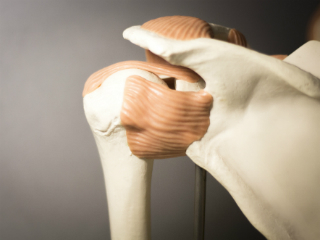 Building muscle is simple. Lift heavy things, rest, make sure you eat enough food, sleep, repeat. For a beginner, progress is linear and relatively sudden. You get quick feedback: your muscles get more defined, you look a little leaner, you can lift a little more each session, friends and co-workers notice and comment on the changes. New striations pop up, clothes fit differently, you feel more capable dealing with the physical world. You’re hungrier and heavier, yet still manage to drop belt sizes. All is well.
Building muscle is simple. Lift heavy things, rest, make sure you eat enough food, sleep, repeat. For a beginner, progress is linear and relatively sudden. You get quick feedback: your muscles get more defined, you look a little leaner, you can lift a little more each session, friends and co-workers notice and comment on the changes. New striations pop up, clothes fit differently, you feel more capable dealing with the physical world. You’re hungrier and heavier, yet still manage to drop belt sizes. All is well.
Muscle isn’t the only thing you’re impacting when you lift heavy things, though. You’re also imposing stress on your tendons and demanding an adaptive response. You’re training your tendons, too.
Yet because tendons receive less blood flow than muscle, and blood brings the nutrients and satellite cells used to repair and rebuild damaged tissue, they take a lot longer to respond to training than muscle. In one study, it took at least 2 months of training to induce structural changes in the Achilles’ tendon, including increases in collagen synthesis and collagen density. Other studies have found that it takes “weeks to months” of training to increase tendon stiffness. Meanwhile, we see structural changes to muscle tissue with just eight days of training.
This basic physiological fact shouldn’t impede our progress and tissue health, but it does.
Our bodies “expect” a lifetime of constant, varied movement. From a very early age, most humans throughout history were constantly active. They weren’t exercising or training, per se, but they were doing all the little movements all the time that prepare the body and prime the tendons to handle heavier, more intense loads and movements: bending and squatting and walking and twisting and climbing and playing and building. It was a mechanical world. The human body was a well-oiled machine, lubed and limber from daily use and well-prepared for occasional herculean efforts.
We don’t have that today. It’s the age of information. And though we spend most of our day in the digital realm, clacking away on keyboards and caressing touch screens, we retain the ancient need for physical training ingrained in our DNA. So we go from couch potato to budding powerlifter, from desk jockey to CrossFitter. But unlike our predecessors, we haven’t applied the lube of daily lifelong movement that makes those intense physical efforts safe. Everyone seems to be lifting weights nowadays, but few have the foundation of healthy, strong, durable connective tissue necessary for safe, effective training.
Just look at kids. The health of their connective tissue has three main advantages over adults:
They practice constant varied movement. They’re flopping down in distress because you turned the TV off. They’re climbing the bookcase, crawling like a dog, leaping like a frog, dancing to every bit of music they hear, jumping from objects twice their height.
They’re still young. Kids simply haven’t been alive long enough to accumulate the bad habits that characterize sedentary life and ruin our connective tissues. They aren’t broken yet.
Their connective tissue is highly vascular. Early connective tissue has a dense network of capillaries, meaning it receives ample blood flow. It regenerates quickly and has a faster response to stress. Mature tendons are mostly avascular and receive very little blood. To stay healthy and heal and respond to stress, they require diffusion of the synovial fluid filling our joints. Vascular blood flow is passive and subconscious; it’ll happen whether you move or will it to or not. Synovial fluid only diffuses through movement. You have to consciously move your joints to get the synovial fluid flowing.
So what can we do?
“Just move constantly like a six year old” is nice and all, but not everyone can crawl through the office, practice broad jumping across the board room, or run the stairwells with a software engineer on their back. Besides, we have a lot of catching up to do. More concerted, targeted efforts are required to overcome a lifetime of linear, limited movement and tons of sitting.
Before we make any decisions, let’s understand exactly what tendons do.
They attach muscles to bones. It is through tendons that muscles transmit force and make movement possible. Contracting your muscles pulls on the tendons, which yanks on the bone, producing movement.
Tendons also provide an elastic response, a stretch-shortening recoil effect that helps you jump, run, lift heavy things, and absorb impacts. Think of it like a rubber band.
Tendons have two primary properties that determine how they function:
Stiffness
The degree to which a tendon can withstand elongation and maintain form and function when placed under stress. Contrary to how we usually think about stiffness, a stiff tendon can help us transmit more force and be more stable in our movements. It takes a lot more force to get a stiff tendon to elongate, but they reward your efforts with a powerful recoil.
Stiff tendons are stiff. More elastic tendons are compliant. We need a mix of compliant and stiff tendons, depending on the tendon’s location and job.
Hysteresis
The efficiency of the recoil response. If you waste a lot of energy in the rebound, you have high hysteresis. If your recoil is “snappy,” your tendons have low hysteresis. Low is better.
Other things matter, of course, like where the tendon “attaches” to the muscle. The farther it attaches from the axis of rotation, the stronger you’ll be (imagine holding the baseball bat in the center or the handle and trying to swing; which grip position will allow greater force?). Another is length; longer tendons have greater elastic potential than shorter ones, all else being equal. But that’s determined by genetics and out of our control.
What can you do to optimize these properties? There are some possibilities.
1. Eccentrics
Many studies indicate that eccentric exercises (lowering the weight) are an effective way to treat tendon injuries. In one trial, ex-runners in their early 40s with chronic Achilles’ tendonitis were split into two groups. One group had conventional therapy (NSAIDs, rest, physical therapy, orthotics), the other did eccentric exercises. Exercisers would do a calf raise (concentric) on the uninjured foot and slowly lower themselves on the injured foot (eccentric heel drop) for 3 sets of 15 reps, twice a day, every day, for 12 weeks. Once this got easy and pain-free, they were told to increase the resistance with weighted backpacks. After 12 weeks, all the ex-runners in the exercise group were able to resume running, while those in the conventional group had a 0% success rate and eventually needed surgery.
If heel dips can heal Achilles’ tendinopathy and single-leg decline eccentric squats can heal patellar tendinopathy, I’d wager that eccentric movements can strengthen already healthy tendons. Any tendon should respond to eccentrics. Downhill walking, slowly lowering oneself to the bottom pushup position, eccentric bicep or wrist curls; anything that places a load on the muscle-tendon complex while lengthening it should improve the involved tendons.
2. Plyometrics
Explosive movements utilizing the recoil response of the tendons can improve that response. In one study, 14 weeks of plyometrics (squat jumps, drop jumps, countermovement jumps, single and double-leg hedge jumps) reduced tendon hysteresis. The trained group had better, more efficient tendon recoil responses than the control group. Tendons didn’t get any bigger or longer; they just got more efficient at transmitting elastic energy. A previous 8-week plyometric study was unable to produce any changes in tendon function or hysteresis, so you need to give it adequate time to adapt.
3. Explosive isometrics
Explosive isometric training involves trying to perform an explosive movement against an immoveable force, like pushing a car with the parking break on, trying to throw a kick with your leg restrained by a belt, or placing your fist against the wall and trying to “punch” forward. In one study, explosive isometric calf training 2-3 times a week for 6 weeks was just as good as plyometric calf training at increasing calf tendon stiffness and jump height while being a lot safer and imposing less impact to the joints.
4. Volume-increasing exercises
Volume clearly matters. Just look at the beefy fingers of free climber Alex Honnold, who relies on them every day to support his bodyweight. Those aren’t big finger muscles. They’re thick cords of connective tissue. Pic not enough? In performance climbers with at least 15 years experience, the finger joints and tendons are 62-76% thicker than those of non-climbers. And a study showed that the extremely common crimp hold—where all five finger tips are used to hold a ledge—exerts incredible forces on the finger connective tissues, spurring adaptation. So if you’re up to the challenge, rock climbing (indoor or outdoor) is a great way to increase tendon volume.
5. Intensity-focused exercises
You have to actually stress the tendons. We see this in the eccentric decline squat study mentioned earlier, where decline squats (which place more stress on the patellar tendon) were more effective than flat squats (which place less stress on the patellar tendon) for fixing patellar tendinitis. In another study, women were placed on a controlled bodyweight squat program. They got stronger, their musculature improved, and their tendons grew more elastic, but they failed to improve tendon stiffness, increase tendon elastic storage capacity, or stem the age-related decline in tendon hysteresis. The resistance used and speed employed simply weren’t high enough to really target the connective tissue. A recent study confirms that to induce adaptive changes in tendon, you must apply stress that exceeds the habitual value of daily activities. So, while walking, gardening, and general puttering about is great for you, it’s probably not enough to coax an adaptive response out of your ailing tendons. You need to increase the magnitude of the applied stress through tinkering with volume, speed, resistance, range of motion, and the proportion of eccentric vs. concentric movement.
6. Full range of motion
Deeper, longer, farther is probably best. Consider the squat. An ass-to-grass front squat, where the hip crease drops below the knees, will stretch/stress the patellar tendon that attaches the quad to the shin bone to a greater extent than squatting to just above parallel.
7. Avoid pain, seek mild discomfort
Tendon discomfort is okay. Stress isn’t comfortable. Tendon pain is not and should be avoided. You want just enough discomfort to provoke a training stimulus, but not outright pain.
8. Daily practice
Think about—and train—your connective tissue every day. That could range from random sets of eccentric heel drops and static squat holds done throughout the day. I like Dan John’s “Easy Strength” program, where you basically pick a few movements to do each day—every day—with a fairly manageable weight. Front squat, Romanian deadlift, and pullups, for example. 2 sets of 5 reps each day for each exercise. Only add weight when it feels “too easy.”
9. Don’t rush; take it easy
Pick a load and stick to it until it gets easy. In a pair of incredible appearances on Robb Wolf’s Paleo Solution Podcast, Christopher Sommer of Gymnastic Bodies explains how he puts together a tendon-centric program for an athlete. He has them stick with the same weight for 8-12 weeks. The first few weeks are hard. The weight feels heavy. At 4 weeks, it’s a lot easier but still a challenge. At 8 weeks, you start feeling like it’s too easy. And that’s where the tendon-building magic happens. By 12 weeks, what felt tough when you started is now “baby weight.” Your muscles are stronger and your tendons have had enough time to build collagen density. You’re able to manhandle the weight without a problem.
Like I just mentioned above, another example is Dan John’s “Easy Strength,” which has you lift almost every day using light-moderate loads, only adding weight when 2 sets of 5 reps becomes really easy. You won’t see the rapid progression of Starting Strength, but it’ll also be easier on your body, prepare your tendons for higher loads, and remove the need for a gallon of milk a day.
10. Partial reps
Early 20th century strongman George Jowett developed a program for “strengthening the sinews” that involved partial reps of extremely heavy weights. He focused on the final 4-6 inches before lockout of the primary exercises, like bench press, overhead press, squat, and deadlift.
11. Massage and myofascial work
Massages can increase blood flow to the otherwise avascular tendons. Self myofascial release using foam rollers or lacrosse balls (or even the good ol’ elbow) is worth doing, too.
Building connective tissue strength isn’t just for preventing injuries. It will make you stronger, too. Every person aged 16 to 28 knows about “old man strength.” It’s that phenomenon of otherwise unimpressive looking old guys crushing your hand when shaking it, being immovable statues down low in pickup basketball games, and generally tossing you around like you were a child in any feat of strength. What explains it? It’s not the muscles (yours are bigger). It’s not the speed (you’re younger and faster). It’s gotta be the connective tissue made thick and strong from decades of hard living.
And so in real-world, full-body movements and compound exercises like squats, deadlifts, pullups, and gymnastics work, healthy and strong tendons increase performance. They make you stronger, more explosive, more powerful, and more resilient. They allow your big impressive muscles to actually express themselves and reach their full potential. A healthy tendon is a conduit for your muscle to express its power.
Muscles are cool and all, but don’t neglect the tendons. Feel the stretch and when you feel some weirdness in a tendon, back off. Throw in some eccentric movements and explosive isometrics. Practice hops and broad jumps. Do a joint mobility drill regularly, and consider adding a morning movement practice. Don’t feel guilty for not going hard all the time. Get really comfortable with the weight and the movements before increasing the intensity.
There’s more to the tendon story, but these are a few easily implementable suggestions for improving your tendons with physical training.
Thanks for reading, everyone. How do you train your tendons? Have you ever considered such a thing?




August 23, 2016
Should You Wear a Fitness Tracker?
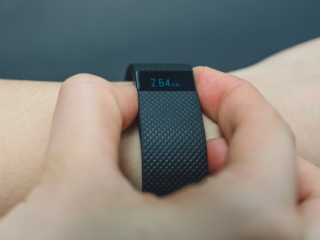 For a nation of supposedly obese, lazy, and sedentary layabouts, American consumers sure are interested in tracking their daily activity levels. In 2015, they bought 13.4 million dedicated activity trackers, up 50% from the previous year, and spent almost $1.5 billion on the devices. That’s in addition to the hundreds of millions of smartphones in circulation that also track your daily steps, sleep quality and duration, and calorie expenditure. From FitBit to Jawbone to Apple Watch to dozens of others, the wearable fitness-tracking gadget industry is growing quickly. Venture capital has responded, pouring billions into the wearable industry.
For a nation of supposedly obese, lazy, and sedentary layabouts, American consumers sure are interested in tracking their daily activity levels. In 2015, they bought 13.4 million dedicated activity trackers, up 50% from the previous year, and spent almost $1.5 billion on the devices. That’s in addition to the hundreds of millions of smartphones in circulation that also track your daily steps, sleep quality and duration, and calorie expenditure. From FitBit to Jawbone to Apple Watch to dozens of others, the wearable fitness-tracking gadget industry is growing quickly. Venture capital has responded, pouring billions into the wearable industry.
Are they worth it?
It depends. According to some data, about a third of users stop using their devices within six months of getting them. Then again, “most people” don’t know the difference between polyunsaturated and saturated fat. “Most people” don’t care enough to watch their carb intake, or pay a little extra for grass-fed beef, or eat a Big Ass Salad every day. These statistics collate yet ignore individual data points. If you decided to pick up a FitBit or a Jawbone or an Apple Watch, the only data point that matters is yours. Most people might stop using their wearable after a couple months. You might keep wearing it.
Are they accurate?
According to research from December of last year, they aren’t very accurate at tracking data beyond step count. Researchers analyzed 22 studies exploring the ability of FitBit and Jawbone (the two most popular trackers) to accurately track, sleep, steps, calories burned, distance, and physical activity. They were both good at counting steps, but missed the boat on almost everything else.
They overestimated sleep duration. Overall, accelerometer-based sleep-tracking wearables compared poorly to established medical devices for tracking sleep, like polysomnography (used in sleep studies) and actigraphs.
They underestimated distance traveled at high speeds and overestimated distance traveled at low speeds.
One study found that the FitBit accelerometer was fairly accurate when assessing physical activity; others found that both the Fitbit’s and the Jawbone’s were not.
Both tracker brands underestimated and overestimated calories burnt, depending on the study.
A 2016 study looked at four different brands—FitBit Charge HR, Apple Watch, Mio Alpha, and Samsung Gear S—of wrist trackers and found that while heart rate tracking was accurate, energy expenditure tracking was not.
Another 2016 study found that while most trackers are accurate with step tracking over flat ground, step tracking on stairs is less accurate, and distance tracking on stairs is overestimated by at least 45%.
That said, these aren’t huge hits against wearables. Raw step count and resting HR are the most important features of today’s fitness trackers, as they allow you to track:
Daily activity. Are you moving frequently at a slow pace? Are you hitting the 10k step mark? Walking is the foundation of good physical, mental, and psychological health. It’s fundamental to our species—we’re walkers.
Heart rate zone. If you’re at all interested in becoming a fat-burning beast, spending a lot of time in the aerobic heart rate zone (180 minus age) will get you there, and a HR monitor can help you figure out what it looks and feels like.
The million dollar question: do they encourage more activity?
Surprisingly, few researchers have even explored this fundamental question: whether fitness trackers increase activity. What exists isn’t very encouraging.
A 2015 study gave overweight middle aged women either a standard pedometer (counts steps and distance) or a wearable fitness tracker. Both groups were coached to take 10,000 steps a day and engage in moderate aerobic activity for 150 minutes a week. After four weeks, the pedometer group saw no improvement. The fitness tracker group was little better, only increasing weekly activity by 38 minutes. No one reached 10,000 steps a day.
Anecdotes of how wearing a tracker changed this person’s fitness and helped them lose a dozen pounds and lose that baby weight abound, and I’m hesitant to discount them. If tracking your activity really does encourage you, then it works. For you. And since this thing we call society consists of millions of subjective realities traipsing about, each crafting a separate narrative, “for you” is the only relevant qualifier.
Okay, all that aside, most of the downsides I’ve discussed derive from limitations of the technology. Wearables are still young. Future tech will improve, and I’m confident that within 5-10 years we’ll have consumer-level devices that accurately track sleep, calorie expenditure, metabolic rate, fat-vs-sugar-burning ratio, and dozens of other biomarkers. It’s only a matter of time.
But there’s another potential downside, one that has little to do with the accuracy of the technology or the technology itself. It’s how we silly humans exalt numbers over feelings, objectivity over subjectivity.
This has its advantages. When we can track it, people who otherwise might not put in the effort suddenly care about getting enough steps each day. Put something down on paper/in an app and it becomes real. You care more about what you can quantify. You pay closer attention to your steps per day, and aim for more each day, when you’re getting real time feedback, your friends are getting notifications when you hit your goals, your wrist is buzzing with excitement over your 10,000th step. When you’re wearing a fitness tracker, getting 10,000 steps doesn’t just make you healthier, it makes you happier. And health-seeking behaviors only become second-nature when we can derive intrinsic value—happiness, in this case—from their pursuit.
This all sounds great, Sisson. What’s the downside? Once you start quantifying your physical activity, activity you don’t track loses value.
If you forget your wearable, you lose your steps. If your exercise session won’t show up on your daily wrap-up, if, God forbid, your FitBit friends won’t see all the walking you did today, you may be less likely to do it. Especially if you’re only walking to pad your stats.
It’s like the tree falling in the forest. Did you really take that walk to the grocery store if your FitBit wasn’t there to record the steps? Did you actually reach the fat-burning aerobic zone in your long easy run if you forgot to wear the heart rate monitor?
Are you walking so much because you like the small hit of dopamine that floods your brain every time you get another thousand, or do you actually enjoy ambling around? Is your motivation truly intrinsic?
Before the trackers, steps taken were lost to the past. You’d step, and shift your weight, and it was over. Gone. You might recall where you walked and what you saw and whom you were with, but you didn’t have any real notion of how many steps you’d taken. The thought to count them never even entered your mind. You could, but it’d be laborious and frankly ridiculous to count your steps in your head.
You know. You know now. But your FitBit friends don’t. And before long—a week or two, maybe—you’ll have forgotten all about it. If that scares you, there may be a problem.
Maybe I’m old school. Maybe I don’t get it. Maybe I’m a Luddite (who just so happens to run a successful online business). But I’m far more interested in fine-tuning my intuition than relying on technology to tell me how healthy I’m being. I’m not saying you shouldn’t use them.
If you want to use one, just do it right:
Wear it on the same spot. You can wear it on your lapel, your hip, your wrist, or your ankle as long as you wear it there every time. The more consistent you are, the more accurate the device will be.
Be accurate when entering your personal data. To give you accurate data, the tracker needs to know your real height and weight. If your weight changes, update it.
Calibrate your step length. Some wearables allow you to calibrate your true step length when you start using the device. Doing so will improve the accuracy of distance tracking.
Stop moving when taking your heart rate. Most consumer wrist-wearables are unable to accurately track heart rate when you’re in motion. To get an accurate reading, stop exercising and rest for 5-10 seconds before checking your HR.
Focus on trends, not absolute numbers. If what the device says about last night’s sleep corresponds to how you feel about last night’s sleep, it has value. If it conflicts—if you feel great despite getting poor marks on your tracker—it’s probably inaccurate. But that makes you wonder: if you’re only using the tracker to confirm your subjective impressions, how valuable is the tracker? Just use your intuition.
Remind yourself every morning that you are a privileged rich person who’s probably already rail-thin. The added weight of your guilt will increase your heart rate and calories burned.
Most importantly, use your fitness tracker to enhance and inform your intuition, not replace it.
This wasn’t intended to be a review of all the available fitness trackers. It was a quick review of the evidence for and against along with my personal take on the technology.
I’d love to hear about your experiences with wearables down below. What worked? What didn’t? What did you gain from wearing a fitness tracker? What have you lost?
Thanks for reading, everyone.
Like This Blog Post? Subscribe to the Mark's Daily Apple Newsletter and Get 10 eBooks and More Delivered to Your Inbox for FREE



August 22, 2016
Dear Mark: Does Cupping Work?; Do I Need More Protein?
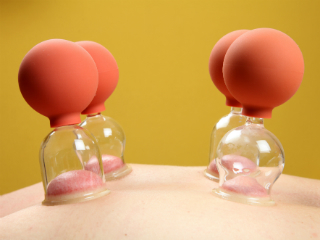 For today’s edition of Dear Mark, I’m answering a couple questions from readers. The first one concerns cupping, the controversial therapy used by dozens of Olympians, including most notably Michael Phelps. What does it do, if anything? How does it work, if it even works? And then I discuss the need for increased protein intake in the context of losing lean mass. We want to lose fat, not lean, remember, and there’s evidence that increasing your protein intake can preserve lean muscle. Especially when you’re exercising a ton and eating low-carb.
For today’s edition of Dear Mark, I’m answering a couple questions from readers. The first one concerns cupping, the controversial therapy used by dozens of Olympians, including most notably Michael Phelps. What does it do, if anything? How does it work, if it even works? And then I discuss the need for increased protein intake in the context of losing lean mass. We want to lose fat, not lean, remember, and there’s evidence that increasing your protein intake can preserve lean muscle. Especially when you’re exercising a ton and eating low-carb.
Let’s go:
Dear Mark,
While watching the Olympics I have seen many athletes with these red circular spots on their bodies that they are calling “cupping.” What is “cupping” and does it work? Thanks Mark!
Grok on!
David R.
Cupping is the use of a vacuum seal to pull on a person’s skin, breaking capillaries and drawing blood to the surface. This creates the distinctively large round red or purple mark seen on many Olympic athletes this year. It’s an ancient treatment.
In the ancient Mediterranean, coastal healers would lower patients into octopus cages to be ravaged by the animal’s suction cups. It was inexact, more art than science, but it was effective. Around the turn of the 19th century, urban plumbers often doubled as medicine men, using their plungers to draw diseased blood up to the surface. During the 50s, door-to-door vacuum salesmen applied intense suction to cure housewives of their mania. The early 90s saw angsty suburban youths searching for kicks in between Nirvana record releases use swimming pool suction hoses to feel alive and boost skateboarding performance. And what is the hickey but an anti-inflammatory treatment between teen sweethearts?
Does it actually have any benefits?
One undeniable benefit of cupping is that it throws the supra-rationalist skeptics over at blogs like Science Based Medicine into an absolute tizzy of righteous indignation. How dare Michael Phelps use his influence to promote “pseudoscience” to millions of impressionable young fans? By flagrantly flaunting his cupping circles, Phelps has raised an armada of future Traditional Chinese Medicine practitioners. I’ll bet as many kids are now practicing acupuncture on each other with Grandma’s sewing kit as there are kids joining the swim team. For shame, Phelps.
According to a trainer with the US Swim Team, cupping has nothing to do with “chi” or “life force” or anything metaphysical. It’s simply another way to treat adhesions and knots in the fascial tissue surrounding and supporting an athlete’s musculature. I’ve discussed fascia before (and will do in the near future). It’s like foam rolling only in reverse. Instead of trying to finagle apart gummed up tissues through compression, cupping seeks to pull gummed up fascia off of muscle using decompression.
Furthermore, the athletes receiving the treatment aren’t just lying there. They’re moving the affected tissues through their full range of motion as the cupping is applied. This helps restore healthy movement patterns and tissue health. Another big advantage, according to the trainer, is that cupping works quickly. What might take weeks using conventional forms of physical therapy and myofascial release takes just five to ten minutes with cupping.
“This is just sports lore,” you might say. There aren’t any solid RCTs supporting his claims, just anecdotes and case studies. But it’s not like this is some weirdo in your yoga class making wild claims. The sporting world gets to a lot of this stuff before “science” does. They’re more willing to try stuff that sounds a little crazy if it could help their athletes get an edge. Sometimes they strike gold, sometimes they fail. The cream tends to rise to the top.
And it’s not like there isn’t any support in the literature. Dry cupping has been shown to improve pain, stiffness, mobility, and general symptoms in patients with knee osteoarthritis, and in patients with chronic neck pain, dry cupping improved both subjective and objective measurements of pain.
I think it may very well work.
Hi Mark,
My personal trainer measures my fat by doing the 7 site skinfold test. While I lost 1.7% fat last month, he also noticed that I lost 2.4 pounds of lean mass. (Does this mean loss of actual muscle?) I’m eating primally and very low-carb, and I’m doing sprinting, reasonable cardio (biking to and from work every day, about 80 minutes total) and lots of bodyweight exercises and lifting weights. Do you have any suggestions for how I can prevent further loss of muscle? I feel like I’m eating a decent amount of protein every day (3.5 scoops of Primal Fuel in the mornings, usually three eggs in my lunch with veggies, and maybe 4-5 oz of protein with dinner) but maybe I need to eat more?
Thanks for all that you do!!
Jean
3.5 scoops of Primal Fuel is 35 grams of protein.
3 eggs gives you 18 grams of protein.
4-5 ounces of meat gives you about 35 grams of protein, depending on the cut and amount of fat on the meat.
That’s around 88 grams of protein. It’s not low and I’d need to know your body weight, but given the amount of physical activity you’re doing and the fact that you seem to be dieting, you should probably eat more.
Very low-carb and low-calorie on top of high physical activity increases protein needs. Otherwise, you may breakdown muscle tissue for amino acids to convert into any glucose you require. We see this in the research into elite gymnasts on ketogenic diets who manage to maintain physical performance and lean mass while losing body fat. They aren’t eating the type of 90% fat keto diets you’d use for kids with epilepsy. They’re eating very low-carb, high-fat, and high-protein (around 200 grams a day) keto diets. And in the latest CrossFit keto study, ketogenic athletes performed well and only lost a little lean mass while eating a 1500 calorie a day ketogenic diet, but they had to increase their protein intake by 15% to do it. And they still lost some lean mass.
Anytime you lose lean mass, up the protein. It’s just a safe practice that usually helps, and never hurts.
Try another egg and 4 more ounces of meat. Tell me how that goes for you.
Thanks for reading, everyone. Take care!
Like This Blog Post? Subscribe to the Mark's Daily Apple Newsletter and Get 10 eBooks and More Delivered to Your Inbox for FREE



August 21, 2016
Weekend Link Love – Edition 414
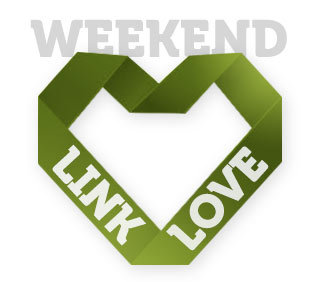 Want to run your own Primal Kitchen Restaurant? Submit your info here. If you’re a match, you’ll get access to an exclusive informational webinar on September 8th.
Want to run your own Primal Kitchen Restaurant? Submit your info here. If you’re a match, you’ll get access to an exclusive informational webinar on September 8th.
Research of the Week
A 30% ketone diet improves rats’ cognitive and physical performance.
Calcium intake has a protective relationship with colorectal cancer risk.
More evidence that fidgeting (feet) is good for your health (when sitting).
Broccoli sprouts alleviate anxiety and depression in animals.
Intermediate HDL levels may be better for longevity than too low or too high.
African runners have greater resistance to fatigue during general activity than European runners.
Non-celiac gluten sensitivity exists (again).
New Primal Blueprint Podcasts

Episode 131: Dr. Gary E. Foresman, MD: Host Elle Russ hangs out with Dr. Foresman, a Primal doc with extensive experience treating thyroid and other disorders using modern diagnostics, traditional wisdom, and cutting edge lifestyle modification. If you have any interest in thyroid health, this podcast is a can’t-miss.
Each week, select Mark’s Daily Apple blog posts are prepared as Primal Blueprint Podcasts. Need to catch up on reading, but don’t have the time? Prefer to listen to articles while on the go? Check out the new blog post podcasts below, and subscribe to the Primal Blueprint Podcast here so you never miss an episode.
8 Confidence-Building Exercises for Primal Success
7 Habits of Highly Successful Primal Endurance Athletes
Interesting Blog Posts
Why is nutrition science so messy?
Using machine learning and 18 months of data, a developer discovered that sleep has the greatest impact on his bodyweight.
New tech will enable researchers to monitor biomarkers in real-time, rather than rely on misleading snapshots.
Want to know if type 2 diabetes is in your future?
Media, Schmedia
The man who gold medaled in the javelin used Youtube clips to train.
A fairy tale comes to life.
Alarming new data indicates that the nation’s love testers need recalibration and that millions of requests that Dad “launch me into the deep end with a 360 spin” will go unfulfilled.
Everything Else
Golden rice sure is pretty, but it’s been a bit of a dud when it comes to fixing vitamin A deficiency.
Support The Sioux Chef, a new restaurant based on Native American cuisine, if only for the perfect name.
The FDA wants to make poop harder. To buy and sell, that is.
Within ten years, prospective parents will be able to quantify (and respond to) the genetic destiny of their unborn child.
CRISPR might be used to eliminate pesticide use.
How the fastest men from the last 120 years measure up to each other. And how the fastest men from every country today measure up.
The is Frenchman Robert Marchand, a 104 year-old cyclist.
Should kids be playing augmented reality games?
Panda Express to unveil chorks.
A real life TriCorder for real-time human biometrics may be coming.
Move over, Tim Ferriss.
Recipe Corner
Smoked paprika coconut chips. The paprika is smoked, not the coconut.
Decadent Paleo Ramen Burger from Spice Cave. Ramen can’t be Paleo, right? Think again.
Time Capsule
One year ago (Aug 21 – Aug 27)
How to Create a String of Success – Keep the train rolling.
Introducing Don’t Just Sit There! – My excellent collaboration with Katy Bowman.
Comment of the Week
Don’t just do something; sit there.
– Exactly, Walter.
Like This Blog Post? Subscribe to the Mark's Daily Apple Newsletter and Get 10 eBooks and More Delivered to Your Inbox for FREE



August 20, 2016
Primal N’Oatmeal
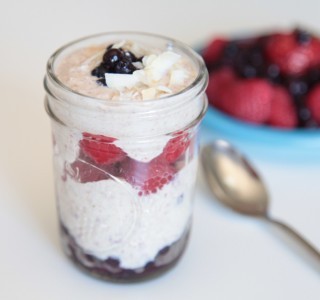
On mornings when a bowl of oatmeal is what your body craves, this hearty and comforting Primal breakfast cereal is exactly what you need. Coconut flakes, almonds, pecans, and the milk of your choice are blended into a creamy, oatmeal-like cereal that’s sweetened with a single Medjool date and topped with fresh berries.
Make Primal oatmeal in the morning, or the night before. Serve it hot, or cold. Personalize your bowl by using different types of nuts and non-dairy milks, sweetening with pure maple syrup instead of a Medjool date, and adding more flavor and nutrients with add-ins like butter, cinnamon, Primal Fuel, powdered gelatin or chia seeds. However you do it, “oatmeal” doesn’t get any tastier than this.
Serving: 2
Time in the Kitchen: 10 minutes (plus, time to soak the nuts, if desired)
Ingredients

¼ cup unsweetened coconut flakes (16 g)
¼ cup raw almonds, preferably soaked (1.25 oz/37 g)
¼ cup raw pecans, preferably soaked (1 oz/25 g)
½ cup coconut milk, nut milk or cow’s milk (120 ml)
1 pitted medjool date, soaked for 10 minutes in hot water
Pinch of salt
Optional Add-ins
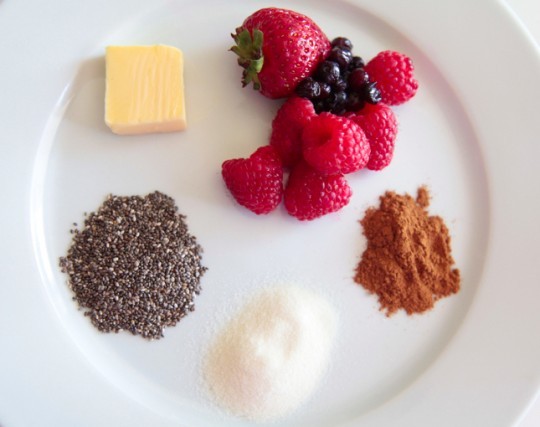
Fresh berries
Butter
Syrup (instead of the medjool date)
Cinnamon
1 tablespoon Primal Fuel*
1 tablespoon powdered beef or pork gelatin*
1 tablespoon chia seeds*
*If adding Primal Fuel, gelatin, or chia seeds, pour an additional ¼ cup or more of milk into the bowl of finished cereal, then stir in the Primal Fuel, powdered gelatin and/or chia seeds.
Instructions
In a high-powered blender, chop the coconut flakes and nuts until finely ground.
Add the milk, date and a pinch of salt. Blend until thick and smooth.
Pour into serving bowls. Add more of your favorite milk, if desired, plus additional add-ins. Serve hot or cold.
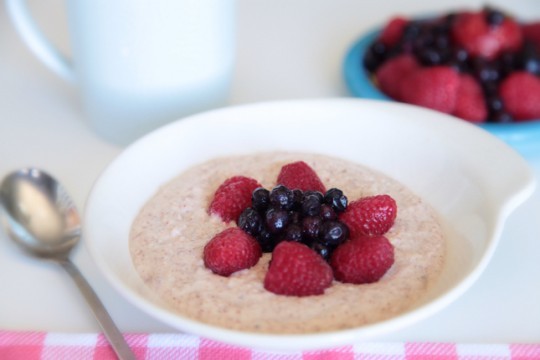




August 19, 2016
Primal Not Only Transformed My Body, but My Passion for Life
It’s Friday, everyone! And that means another Primal Blueprint Real Life Story from a Mark’s Daily Apple reader. If you have your own success story and would like to share it with me and the Mark’s Daily Apple community please contact me here. I’ll continue to publish these each Friday as long as they keep coming in. Thank you for reading!
 It all started with a shopping cart full of Marie Callender’s frozen meals, lean pockets, and cereal boxes. I had decided that I wanted to stop being fat. As an elementary schooler, this meant that I would ask my mom what this would require and follow her advice. “Don’t eat anything with over 1/3 of the calories being supplied by fat. Here’s how to do the math…” Who doesn’t love the taste of processed carbs and sugar? These low-fat shenanigans (eeeeeevil shenanigans) transitioned into the “cereal for every meal” diet, during which my uncle presented me with a dozen or two of generic cereal boxes. I loved eating it and it was what I was told would lower my body fat. As I was often the fattest body in the room during school or other gatherings, I followed any advice I received wholeheartedly. The only time I was safe from being the heaviest set soul in the building, was when I was fortunate enough for my little brother or the half dozen more obese kids in my school to steal people’s attention with their own chubbiness.
It all started with a shopping cart full of Marie Callender’s frozen meals, lean pockets, and cereal boxes. I had decided that I wanted to stop being fat. As an elementary schooler, this meant that I would ask my mom what this would require and follow her advice. “Don’t eat anything with over 1/3 of the calories being supplied by fat. Here’s how to do the math…” Who doesn’t love the taste of processed carbs and sugar? These low-fat shenanigans (eeeeeevil shenanigans) transitioned into the “cereal for every meal” diet, during which my uncle presented me with a dozen or two of generic cereal boxes. I loved eating it and it was what I was told would lower my body fat. As I was often the fattest body in the room during school or other gatherings, I followed any advice I received wholeheartedly. The only time I was safe from being the heaviest set soul in the building, was when I was fortunate enough for my little brother or the half dozen more obese kids in my school to steal people’s attention with their own chubbiness.
Soccer was always an integral part of my life, and I’m sure it helped my body composition, but it never solved the issue. My triathlete, body-building, never-stop-moving uncle was kind enough to help motivate me to join him in his endurance endeavors as well as provide support for the gym. I followed his body-building style, extended session workouts while simultaneously dabbling in P90X, Body By Science by Kris Gethin, and the conventional low-fat, high PUFA propaganda. I even poured my heart and soul into two years of MMA training followed by two years of wrestling in high school. The body fat wouldn’t go away. Combined with mild gynecomastia, self-confidence and self-worth was not very high. The MMA and wrestling made me feel a lot better about myself, but all too often I could be found wasting copious amounts of time watching the cooking channel, playing Call of Duty, or reading. Sedentary living was my default setting.
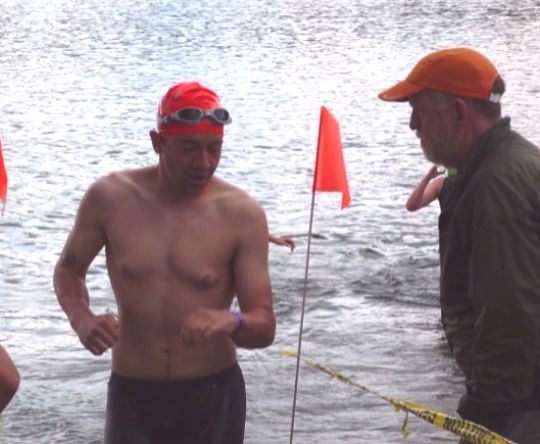
All the way until college, I had a negative image of my body and no real passion in life, aside from being a health nut that didn’t appear to know what he was talking about. And then one of the ROTC cadets posted Sugar: The Bitter Truth on our Facebook group page. I was enthralled. I went straight to Amazon and bought The Paleo Diet for Athletes by Lorain Cordain. I read the book cover to cover as fast as my engineering work load at The Ohio State University would permit. Internet searches of “Paleo” inevitably led me to Mark’s site. Ever since the day I stumbled upon it in March 2011, I haven’t missed a single post! I immediately ditched all grains, sugar, soy, diary, legumes, and alcohol. I also implemented a workout regimen more in line with The Primal Blueprint’s fitness pyramid.
There was never an immediate weight loss, or anything else visibly dramatic, but I slowly gained more muscle and lost fat. Most beneficial for me though were the posts about social implications of the decisions humans make. Because of Mark, I was pushed toward my passion in life: sustainable agriculture. Somewhere in the onslaught of interesting posts, Mark created a vision in my head that we need to be more careful of how we grow food and grow it in a manner that creates high nutrient yield, while reducing pollution. These ideas inspired me to watch Peter Bane speak on campus about Permaculture. The presentation was so interesting, I changed majors from Mechanical Engineering the following day!
The other lesser acknowledged, but highly beneficial, component of going Primal is the phycological considerations. The posts about body image and accepting one’s self were highly influential to my life and raised it’s quality tremendously! The idea that I could completely ignore how I look, and focus on how I feel, while in the process of making good decisions that promote my holistic wellness and health, was liberating and motivational. I now make decisions based not on “What will cause me to lose another ounce of body fat?” but “What will make me more capable of providing benefits for society or a friend, partner, or family member?” I am now very nearly completely accepting of who I am and what I look like, and it feels so great to acknowledge that every day.

I can’t say definitively that the changes in my mind wouldn’t have occurred without Mark’s guidance, but “going primal” has been so influential that I have to give it the benefit of the doubt. Eating in a manner that minimized carbon dioxide emissions, hazardous pesticide use, nutrient runoff, soil erosion, and ingestion of toxic and detrimental compounds (sugar, processed grains, and industrial oils) while maximizing nutrients and flavor is a joy, my passion in life, and hopefully my career! I say “hopefully” because I am currently searching for employment this moment in Puerto Rico. 
Zach

Save



August 18, 2016
Why Grok Didn’t Have Work-Life Balance and Neither Will You
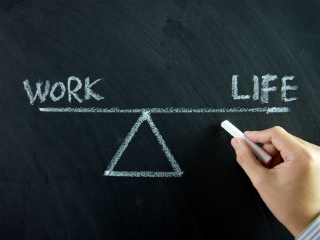 Research published last year revealed that one-quarter of American workers feel it’s increasingly harder to maintain a work-life balance. Among global respondents, that number rose to one-third. According to the survey, parents are among those who struggle the most. Among the difficulties cited by participants, “finding time for me,” “getting enough sleep,” and “managing personal and professional life” were the most commonly mentioned challenges. Even those who manage to leave on time from work may then face an increasing overlap between work and home life, with another survey finding that 20% of participants worked more than 20 hours from home in addition to regular office hours. For all our social and technological advancements, it seems we’re increasingly stuck in an unfortunate cul-de-sac of our own making. Shouldn’t we be beyond this by now? How is it that we can’t seem to innovate, design, reason or hack our way into a better collective work-life balance?
Research published last year revealed that one-quarter of American workers feel it’s increasingly harder to maintain a work-life balance. Among global respondents, that number rose to one-third. According to the survey, parents are among those who struggle the most. Among the difficulties cited by participants, “finding time for me,” “getting enough sleep,” and “managing personal and professional life” were the most commonly mentioned challenges. Even those who manage to leave on time from work may then face an increasing overlap between work and home life, with another survey finding that 20% of participants worked more than 20 hours from home in addition to regular office hours. For all our social and technological advancements, it seems we’re increasingly stuck in an unfortunate cul-de-sac of our own making. Shouldn’t we be beyond this by now? How is it that we can’t seem to innovate, design, reason or hack our way into a better collective work-life balance?
There are, of course, legitimate and wise ways to combine tasks and increase productivity—issues I’ve written about before. Biking to work to make your commute time work for you (and free up time after work for family) or working from home to wholly eliminate a commute most days can be a smart option for some people, but not all of us have that choice immediately available to us. Staggering schedules with a partner to cover childcare or working flex hours to optimize efficiency can be helpful at times, but they’re not a panacea and can impose their own stresses. Making matters even more complicated, both time and energy figure into this picture and each impose their own inevitable limitations. We might cram our work into shorter days but then find we’re exhausted when we get home to enjoy our extra time.
Truth be told, there’s only so much that reorganizing hours while maintaining the same expectations for output. At some point, it’s just a shell game that lets us feel like we’re taking action but results in little benefit. Likewise, we eventually hit diminishing returns in doubling up activities. Walking at a treadmill desk in the office or reading a great novel on the train, fitting in a workout and a quick lunch during the noon hour are all smart choices. But beyond these, the options can start to wade into the less advantageous swamps of multitasking pretty quickly, at which point we’re missing the key point anyway.
What we want from life balance can in most cases be boiled down to ease and fulfillment. I say ease in the sense that we’re not frantically rushing from task to task, juggling goals and projects, making the whole endeavor a miserable slog of checklists rather than a chance for enjoyment. Ease is slow, experimental, meandering, organic. Fulfillment isn’t a quantifiable or predictable recipe, but a varying, personal experience rooted in too many factors to name.
We want life balance in the sense that we want a chance to naturally, unhurriedly experience all the good of life: family connection, socialization, exercise, hobbies, leisure, creativity, rest, self-care and career. Is it really such a tall order? Well, yes and no.
Just where did the myth come from—this belief that we can have it all at the same time? You know, the idea that we should be able to simultaneously balance all the minutiae of our daily lives, our ongoing dreams, and some healthy self-development goals against the immaculate backdrop of a perfect home, great career and impressive social life.
Compared to the days of manual agrarian labor and the early industrial revolution, we have more time on our hands, right? Why shouldn’t we be able to make it all work and live the utopian dream already?
These are the times when a Primal lens can offer needed perspective. Wasn’t Grok, after all, the initial example of natural work-life balance? Can’t he be our emblem for seeking the perfect symmetry of effort and leisure? I’m sorry to burst the bubble, but most definitely, no.
Let’s look at the reality. The average workday for hunter-gatherers was by most estimates in the 3-5 hour range, and this included food acquisition. Unless they experienced food scarcity or moved camps for seasonal migrations, the rest of the time was leisure. In contrast to most assumption, it was a lifestyle not all were interested in giving up for the toils and hours of agrarian life when given a .
The universal and timeless fact is, there’s an opportunity cost when we choose to focus on one facet of life in comparison (or exclusion) of another. We can enjoy more leisure as Grok did (with all the opportunity for rest, socialization and self-development that could go with it), but we can’t pretend to have his life and still maintain all the professional ambitions and material affluence of our own. Hunter-gatherers understood the price and the benefits of their choice, and we need to appreciate the same about ours.
You could say that in some ways our capacity to envision and desire so many interests in life is both a blessing and a curse. We have the ability to simultaneously pursue many priorities but not in equal measure or with equal results. And in the midst of that frustration and disappointment, there’s the entry point.
We all grow up with grand visions of infinite achievements. Yet we also all hit a point when we realize we indeed won’t learn 7 languages, make a billion dollars, have the perfect marriage and 3.5 wonderful children, become leader of the free world, pitch for a professional baseball team, enjoy peace by a quiet lake every night and still have time to run that specialty bookstore and tackles shop on the side. We grow up, absorb the mathematical possibilities of a general life expectancy, and learn the unappealing lessons of compromise. Eventually, we come to some degree of peace around this. And, what then, is so different about fully acknowledging the constraints of a 24-hour day?
Even as we trim back our lofty ambitions, we do well to continue the exercise with more editing zeal. What is it that we really want from life? How do we want to allocate that proverbial pie chart of time for optimum and genuine life satisfaction? And what are we willing to forgo or limit to get it? Do we have the guts to throw out the notion that we have to be (and are even capable of being) stellar at work, family life, social life, health and self-enrichment concurrently?
Where one true commitment advances, one or more lesser interest retreats, and it’s fine—if we accept it as such. Doing so not only will help us move into a life that is more fulfilling by our personal definition, but it also lets us finally drop the fraught, exhausting balancing act of maintaining more than we can reasonably handle, let alone find joy in.
If you’re honest with yourself, could you be happy with a minimalist material lifestyle in order to devote more time and energy to family or creative pursuits? On the other hand, maybe you’ve never really envisioned having a family and don’t desire a large social circle, but you feel deeply called to fulfill a professional mission that holds great personal meaning for you. Or maybe you’ve just always prioritized career and financial success. There’s no judgment in the question, but there is necessity to it. If we accept that the picture can’t be balanced, what do we as individuals want the picture to look like?
And I think it’s important to mention also (and this is something easier to see the longer one’s been around) that there are natural seasons to life when certain lessons, realizations or priorities tend to rise to the surface. At times we go through “chop wood, carry water” stages that are short on adventure and long on labor. Grok knew this, too.
What we feel mired in one decade becomes less of a focus the next. Our circumstances change, and so do we. It’s not necessarily something we can predict, but we can bring awareness and thought to the process. Time and perspective for reflecting on our lives obviously plays a role, too. It’s in these transitions from phase to phase that windows of opportunity can open if we’re committed to making it so. I’ve known people who have gone on to entirely transform their lives in later decades, beginning amazing second acts that no one saw coming. Having the health and vitality from Primal living most certainly helps open up possibilities.
So, what if you feel like you’re in the thick of life and unable to make any dramatic changes, or you’re unsure how you’d reallocate your life given the choice? Understand that there are no absolutes. Get curious about what you want. Be experimental. What feeds you? What do you want to make sure you do every day? Maybe you juggle parenthood and a full-time job along with various and sundry other household and life duties but still manage to spend 20 minutes in your workshop doing whatever creative hobby matters to you. Or maybe it’s that you make sure you get an hour in the woods each day. Or something else.
Surrender the assumption of balance as equality, the sides of a scale always matching up. Let it be more about how you feel at the end of the day. If you can make a commitment to offering yourself quality time—for you—and truly devote it to something every day (or nearly so) that fulfills you well beyond all the passive entertainments, technological compulsion and multitasking (madness) we get caught up in, there’s your opportunity. In fact, apply the Grok model of simplicity, single-mindedness, and flow to that one thing you do for yourself. See what happens over time.
Alternatively, venture to ask the bigger, bolder question of how you want to show up as a parent/partner/artisan/hobbyist/activist/friend/humanist/etc. today. We can ask the bigger question of how we want to show up as “X” each day. This question moves the focus from accomplishment to presence. We don’t necessarily need to “do” anything big or special in any of those roles, but we might bring a deeper mindfulness to them and experience ourselves as more fulfilled as a result.
Because ultimately, a satisfying balance won’t come with parsing out hours and minutes. It comes from staying in touch with what you consider the most essential parts of yourself—who you love, what fascinates you, how you want to contribute to the world, what you want to experience most in this life. Add these to the most fundamental, Primal of questions.
Thanks for reading, everyone. I’d love to read your take on creating a Primally balanced life as you see it. Share your thoughts, and have a great wrap-up to the week.
Like This Blog Post? Subscribe to the Mark's Daily Apple Newsletter and Get 10 eBooks and More Delivered to Your Inbox for FREE



Mark Sisson's Blog
- Mark Sisson's profile
- 199 followers



